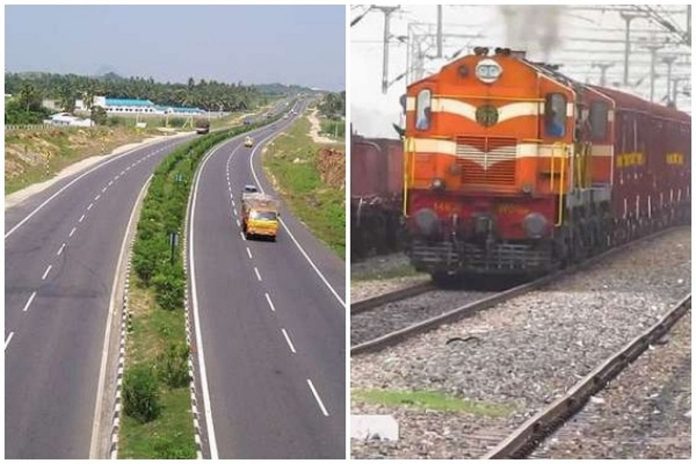During the 56th Network Planning Group (NPG) meeting under the PM Gati Shakti initiative, six infrastructure projects with a combined value of approximately Rs 52,000 crore were evaluated.
This meeting included four projects from the road transport sector and two from the railways. These assessments bring the total number of projects reviewed by the NPG to 112, with a total value of around Rs 11.53 lakh crore since the inception of PM Gati Shakti.
The Ministry of Road Transport and Highways (MoRTH) presented four road projects valued at around Rs 45,000 crore to the NPG, emphasising their adherence to Gati Shakti principles. Here are the details of the road projects:
Greenfield Road in Gujarat and Maharashtra: This project aims to benefit industrial zones in Navsari, Nashik, and Ahmednagar districts, along with boosting the agriculture sector in the region. Additionally, it is expected to enhance the socio-economic development of tribal districts such as Navsari, Valsad, and Nashik by providing improved connectivity. The road will also support the tourism sector and connect aspirational districts like Osmanabad.
Greenfield Road in Gujarat (Amritsar-Jamnagar Economic Corridor): This project will connect the Amritsar-Jamnagar economic corridor with Ahmedabad and Vadodara in Gujarat. It will integrate seamlessly with other modes of transportation, promoting multi-modality in the region.
Bihar Road Project (Patna-Arrah-Sasaram Corridor): Located in Bihar, this project involves the construction of a four-lane road under the Bharatmala Pariyojna. It is expected to drive socio-economic development in Left-wing Extremism (LWE) affected districts, including tribal areas.
Uttar Pradesh Road Project: This project, located in Uttar Pradesh, aims to improve inter-state connectivity among Madhya Pradesh, Rajasthan, Uttar Pradesh, and Uttarakhand.
Two railway project proposals, with a projected cost of approximately Rs 6,700 crore, were also assessed during the meeting:
Greenfield Railway Line in Odisha: This project passes through several districts in Odisha, connecting industrial and mineral clusters in western Odisha with the East Coast port. It promises to boost economic development in the region.
Railway Line Doubling in Kerala: The second railway project, located in Kerala, involves doubling existing railway lines. This infrastructure augmentation will enhance the quality of rail transportation in a highly stressed corridor of the Southern railway, reducing travel time and improving efficiency.
The statement issued by the Commerce and Industry Ministry highlighted the importance of following PM Gati Shakti’s guidelines to facilitate the seamless integration of various transportation modes and encourage multi-modal connectivity, reports The Hindu.
These projects are expected to bring both economic and social development benefits to the regions they serve.
PM Gati Shakti Initiative
PM Gati Shakti will incorporate the infrastructure schemes of various Ministries and State Governments like Bharatmala, Sagarmala dry/land ports, UDAN etc.
Economic Zones like textile clusters, pharmaceutical clusters, defence corridors, electronic parks, industrial corridors, fishing clusters, and agri zones will be covered to improve connectivity & make Indian businesses more competitive.
It will also leverage technology extensively including spatial planning tools with ISRO (Indian Space Research Organisation) imagery developed by BiSAG-N (Bhaskaracharya National Institute for Space Applications and Geoinformatics).
PM Gati Shakti is based on six pillars:
Comprehensiveness: It will include all the existing and planned initiatives of various Ministries and Departments with one centralised portal. Each and every Department will now have visibility of each other’s activities providing critical data while planning and execution projects in a comprehensive manner.
Prioritisation: Through this, different Departments will be able to prioritize their projects through cross-sectoral interactions.
Optimisation: The National Master Plan will assist different ministries in planning for projects after the identification of critical gaps. For the transportation of goods from one place to another, the plan will help in selecting the most optimum route in terms of time and cost.
Synchronisation: Individual Ministries and Departments often work in silos. There is a lack of coordination in the planning and implementation of the project resulting in delays. PM Gati Shakti will help in synchronizing the activities of each department, as well as of different layers of governance, in a holistic manner by ensuring coordination of work between them.
Analytical: The plan will provide the entire data in one place with GIS-based spatial planning and analytical tools having 200+ layers, enabling better visibility to the executing agency.
Dynamic: All Ministries and Departments will now be able to visualize, review and monitor the progress of cross-sectoral projects, through the GIS platform, as the satellite imagery will give on-ground progress periodically and the progress of the projects will be updated on a regular basis on the portal. It will help in identifying the vital interventions for enhancing and updating the master plan.


